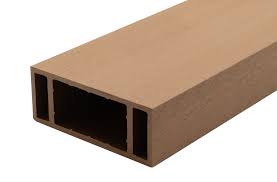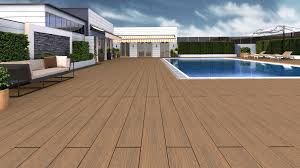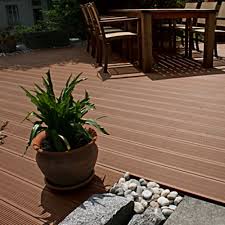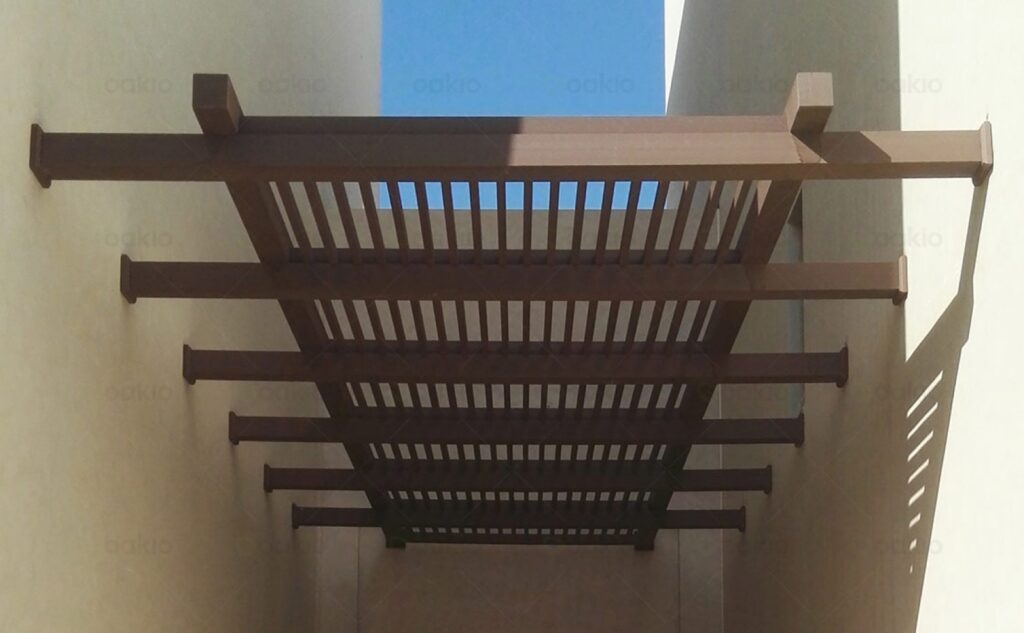WPC (Wood-Plastic Composite) decks and pergolas are increasingly popular alternatives to traditional wooden structures in landscaping. WPC is a composite material made from a combination of wood fibers or sawdust and plastic (often recycled materials).

Durability: WPC is highly durable and can withstand the elements better than traditional wood. It is resistant to moisture, UV rays, insects, and decay, making it a low-maintenance option.
Low Maintenance: Unlike natural wood, WPC does not require regular sealing, staining, or painting. It retains its color and finish without the need for intensive upkeep.
Longevity: WPC has a longer lifespan compared to traditional wood, reducing the need for replacements. This can be especially advantageous in climates with harsh weather conditions.
Eco-Friendly: WPC often contains recycled materials, reducing the demand for virgin wood and plastic. It’s a more sustainable option for outdoor structures.
Aesthetics: WPC comes in various colors and finishes, offering a range of design options. It can mimic the appearance of wood while providing the benefits of a composite material.
Here’s how WPC can be used for decks and pergolas:

WPC Decks:
Material: WPC decking boards are available in different profiles, including grooved and solid. The boards can be installed similarly to traditional wooden decking.
Design: WPC decks can be designed to match the aesthetic of your landscape. Consider the layout, size, and any additional features you want, such as railings, built-in seating, or planters.
Installation: WPC decking installation is typically straightforward and can be done with standard tools. The boards may have hidden fastening systems for a clean look.
Maintenance: WPC decks require minimal maintenance. Regular cleaning with water and mild detergent is usually sufficient to keep the surface looking good.
Safety: Ensure the structure complies with local building codes, especially if the deck is elevated. Check the load-bearing capacity and safety measures, including railings and stairs.

WPC Pergolas:
Design: WPC pergolas can be designed in various styles, from modern and minimalist to more traditional designs. The material’s versatility allows for creative possibilities.
Shade: WPC pergolas provide partial shade, making them suitable for outdoor seating areas or walkways.
Climbing Plants: Similar to wooden pergolas, you can grow climbing plants on WPC pergolas to enhance their beauty and provide additional shade.

Location: Decide where the WPC pergola will be placed in your landscape, taking into account factors such as sunlight, usability, and overall design cohesion.
Maintenance: WPC pergolas require minimal maintenance, with occasional cleaning to remove dirt and debris.
Whether you’re considering a WPC deck or pergola, it’s essential to choose high-quality materials from reputable manufacturers and follow proper installation guidelines to ensure a durable and visually appealing outdoor structure.
